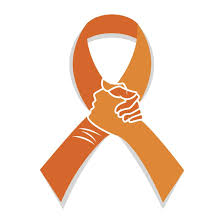Real Life with Raigan is a column written by Arrowhead Editor-in-Chief Raigan Fredericks and features topics pertaining to various aspects of mental health and wellness.
Trigger Warning: Article contains talk of self harm
Have you ever known or been friends with someone who has struggled with mental health?
Have you ever seen people wearing an orange bracelet, or posts on social media representing the color orange?
Have you ever wondered why people wear the color orange in the month of March?
March is self-harm awareness month, and specifically March 1 is national self-harm awareness day.
In this monthly column I write about the mental struggle, or disorder that the current month brings awareness to. This column is going to be the hardest, and most intense one yet.
Anyone can be affected by self harm. In simple terms self-harm is when someone damages their body in numerous ways to cause numbness, or as a temporary distraction.
There is no typical age that self harm can start, but it is common that it can begin at the age of 13. Seventeen percent of people self harm during their lifetime, and 45 percent of those people rely on cutting as their common method to self harm. Since 2009 the rates of young females who partake in self harm have increased by 50 percent.
Self harm is not a diagnosed mental health disorder, but it is just as severe. Self harm is an escape for people who suffer from mental illnesses such as depression, anxiety, and even eating disorders.
20 percent of people who suffer from self harm have a personality disorder such as borderline personality disorder. Thirteen and a half percent suffer from an adjustment disorder, 11 percent have mood disorders such as depression, and 55percent of people suffer from an eating disorder such as anorexia.
At the age of 13 many teens begin to learn a new level of stress with schoolwork, friendships, and their home lives. Most teens tend to have social media at the age of 13, and are going through puberty, so the stress of mental, physical, and social situations can lead to anxiety, and sometimes even depression. These new feelings can begin to be overwhelming and powerful, which can trigger a desire to self harm.
https://www.therecoveryvillage.com/mental-health/self-harm/self-harm-statistics/
Symptoms of self harm to look for can range from:
- Fresh cuts, bruises, burns, bite marks, or other wounds
- Scars, often in patterns
- Having sharp objects, or lighters on constant standby
- Wearing long clothes, even in the warmer weather
- Frequent “accidental injuries”
- Behaviors or actions that change quickly, impulsively, and unexpectedly
- Admittance of helplessness, hopelessness, or worthlessness
- Bloodstains on personal items
- A desire to be alone for extended periods of time in bedrooms, or bathrooms
- Unexplained absences from work or school, or other obligations
People who self harm are struggling so much internally that they resort to self harm as a way of coping.
The marks on one’s body are the outward expressions of the internal struggles that they have trouble expressing, such as emotion, needs, the words they feel no one hears, or their feelings that they can’t express.
Self harm is a temporary relief and distraction from the pain going on inside of oneself. After self harming one will feel shame or guilt from what they just did, and panic knowing that they now need to conceal this from the world, and eventually it will scar, which causes them to go into isolation so no one can find their marked up skin. They will then feel lonely and an even heavier pain, and a deeper emptiness from all the pain and struggling that they experienced previously to the self injury.
https://refugees.org/self-harm-awareness-month/
During this immense period of loneliness and isolation, there may be one or two people that the one struggling still deeply trusts and sometimes relies on them too much. About 50 percent of people who struggle with self harm seek help from those few selected friends or family they trust and not medical professionals.
https://www.therecoveryvillage.com/mental-health/self-harm/self-harm-statistics/
If you are a friend or a family member who has a loved one who suffers from self harm, and only trusts you with it please know that it is not healthy for you to keep that in. As hard as it is, you need to seek help for your loved one as soon as possible because the longer they continue to mark themselves up, the higher chance for infection of the wounds, and the higher chance for a suicide attempt.
For those who struggle with self harm, please know that you are not alone in the darkness. Please know that there are people out there who will bring you into the light, and they will help and walk alongside you in all of your pain and suffering.
For those who are in recovery and were a victim of the mental fall to self harm, be proud with all the progress that you have made. There are going to be days when you look at your scars, and you feel angry or disappointed or ashamed that your struggles got so out of control that you now bear the hurt you felt, but please remember that your scars are a symbol of strength and healing. Your scars tell a beautiful, messy story. Your scars are your story of your strength!
What can we do to bring awareness to the darkness of self harm?
Acknowledge that it is serious and take it seriously.
- Look for the signs and the symptoms
- Do not turn people away, make fun, or judge people for their scars or fresh marks.
- Encourage those who bear the cuts to seek help, or help them seek help yourself.
- And lastly we need to stop being afraid to talk about and speak the words “self harm.” We need to bring it into the light.

Change can be made, but it starts with all of us to recognize self harm, and be educated on how to help!





Socials